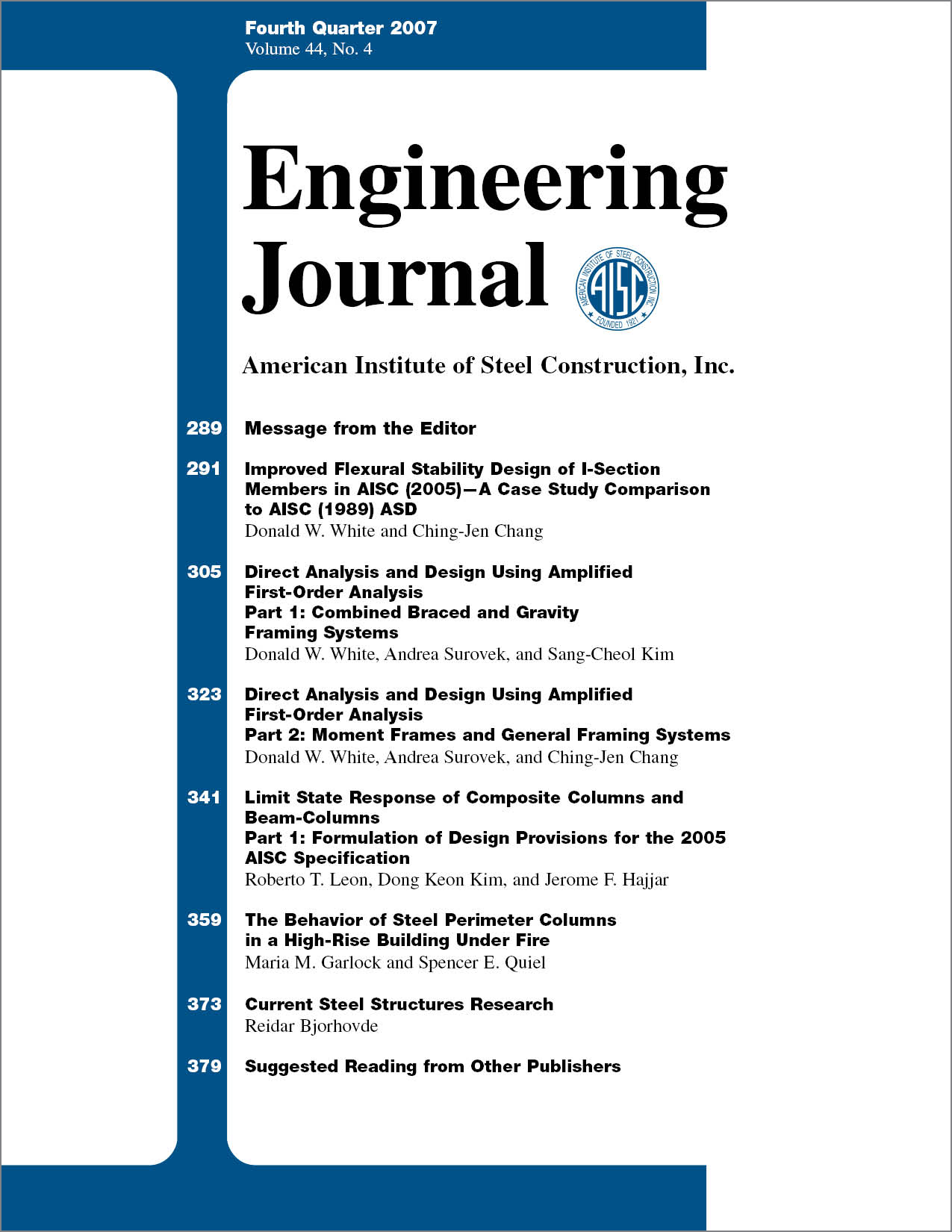Direct Analysis and Design Using Amplified First-Order Analysis Part I: Combined Braced and Gravity Framing Systems
DOI:
https://doi.org/10.62913/engj.v44i4.921Keywords:
Analysis, Lateral Systems, Stability and BracingAbstract
In 1976 and 1977, LeMessurier published two landmark papers on practical methods of calculating second-order effects in frame structures. LeMessurier addressed the proper calculation of second-order displacements and internal forces in general rectangular framing systems based on first-order elastic analysis. He also addressed the calculation of column buckling loads or effective length factors using the results from first-order analysis. The 2005 AISC Specification provides a new method of analysis and design, termed the Direct Analysis Method (or the DM). The DM involves the use of a second-order elastic analysis that includes a nominally reduced stiffness and an initial out-of-plumbness of the structure. The 1999 AISC LRFD and the 2005 AISC Specifications permit this type of analysis as a fundamental alternative to their base provisions for design of stability bracing. In fact, the base 1999 AISC Specification and the 2005 AISC Specification stability bracing requirements are obtained from this type of analysis. This paper demonstrates how a form of LeMessurier's simplified second-order analysis equations can be combined with the 2005 AISC Specification DM to achieve a particularly powerful analysis-design procedure.

